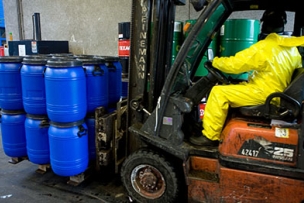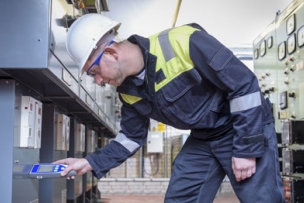The language used in the OSHA lockout/tagout standard can be hard to decipher. The things you need to include in your written lockout/tagout program can be extensive. What if there were resources that could help? Learn about the compliance directive and the minor services exception. Also, gather a few smart tips for documenting your program—and get guidance on periodic inspections from independent auditors and industry insiders.
The lockout/tagout standard (CFR 1910.147) is consistently among the Occupational Safety and Health Administration’s Top 10 most frequently cited violations—usually right in the middle of violations at No. 5.
In part, it is because a lot of the information regulators look for to be in compliance isn't in the regulation itself. It’s also because of the difficulty of managing a program across an entire department or maintenance staff—whether shift or contract teams—say environmental, health and safety consultants and auditors.
At the American Society of Safety Professionals conference, “Safety 2019,” experts weighed in on ways to remove some of the complexity in managing lockout/tagout by isolating what to look out for in the standard and where to spend your energy in practice.
![]() Keep track of all this year's ASSP event coverage on our MSC at Safety 2019 page.
Keep track of all this year's ASSP event coverage on our MSC at Safety 2019 page.
Use the Information a Lockout/Tagout Auditor Uses: Compliance Directives and ANSI Z244.1
There is a lot to know about lockout/tagout when it comes to preventing injuries—and racking up violations and fines from OSHA. Luckily, there are some additional ways to get more detailed information than the standard itself.
One is publicly available and one is not. Care to guess which one?
ANSI is always under copyright protection, so OSHA’s compliance directive or “CPL” (CPL 02-00-147) is easier to access, though it's no easier to interpret, explains Debby Shewitz in her ASSP presentation “Lockout/Tagout: What You Won't Find in the Standard.”
The level of information in compliance directives is more detailed than the standard—and gives auditors more direction for interpretation of areas including authorized employees beyond your standard maintenance teams.
“The CPL definition talks about some circumstances where somebody who may not be doing all of the maintenance work could still be considered an authorized employee for doing just little portions [of work],” says Shewitz, owner of Shewitz Consulting and an environmental and safety expert with 28 years of field experience. “So that's the piece you never pick up just from the standard itself. An even more obvious difference is the definition for control reliability. The standard does not mention it at all.”
The CPL does have a definition for control reliability, which is a method of evaluating the integrity of formats, cards, device and other control systems. Control reliability is a very big topic for those working with advanced machinery, including robotics and electronic technology, Shewitz explains.
And when it comes to ANSI Z244.1, there are additional standards related to hazardous energy that are “very useful resources” including the B11 series which is a “whole series of standards about machine tool safety,” and B11.19 which is the machine guarding standard.
What are the latest innovations in machine guarding? Read “Machine Guarding: What’s Changed in Industry 4.0 – Smart Factory.”




Talk to Us!
Leave a reply
Your email address will not be published. Required fields are marked *